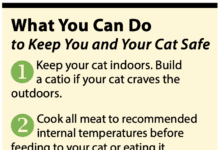While most people know what constipation is, being able to recognize the signs, treatments, and dangers may be less common, says Robert Washabau, VMD, associate professor of medicine at the University of Pennsylvania School of Veterinary Medicine. Washabau, who is also president of the Internal Medicine Specialty of the American College of Veterinary Internal Medicine, says that signs of constipation are sometimes mistaken for signs of lower urinary tract disease and visa versa.
Causes and risks
Washabau defines constipation as the inability to defecate, difficulty in defecation, or painful defecation. While many times we will see a lengthy list of reasons humans are afflicted with the disorder, Washabau says the causes in cats constitute a much shorter list. Based on a review of all published studies, we concluded that there are really only two major causes of constipation, Washabau says, a neuromuscular disorder, which makes it impossible for the colon to mobilize impacted feces; or pelvic trauma, which causes obstruction to the colon.
Occasionally, constipation may be associated with colonic cancer in the cat, but its an unusual finding. There are other predisposing factors that raise the risk for constipation, Washabau says. These risk factors include dehydration, disorders causing vomiting or anorexia (loss of appetite, a sedentary life-style, and obesity.
Breed and gender are also predisposing factors. Seventy percent of the reported cases are in male cats, although this gender predisposition is not easily explained.
Constipation is also a disorder of middle-aged cats, between the ages of five and eight years. There are two breeds that appear to be at increased risk of becoming constipated. Manx cats are born with a congenital condition, an anatomical defect that increases their risk. Some Siamese cats develop problems later in life that cause constipation, although it is not completely understood why.
Treatment options
If clinical signs of constipation persist beyond 24 to 48 hours, it is time to see your veterinarian. Irreversible damage to the colon can result if treatment is delayed any longer, Washabau warned. There are four principle treatments, says Washabau. They are:
1. Remove impacted feces using a water or lactulose (a drug used as a laxative) enema. If manual removal becomes necessary, anesthesia will be required.
2. Give laxatives to increase the fluid content of feces, easing colonic passage.
3. Use a drug that stimulates colonic motility, which is the ability to propel fecal material into the external environment.
4. If the above fail, surgery may be necessary to remove the affected colon.
Left untreated, the colon will begin to dilate. At this point, new clinical signs may appear, including progressive loss of appetite and vomiting. This can lead to a condition known as megacolon. The colon is massively dilated and is no longer functional, explained Washabau. At this stage, the colon is no longer contracting and medical therapies do not work. Thus, a colectomy (surgical removal of the colon) becomes necessary, and the remaining intestine is attached to the rectum.
Cats continue to defecate from the anus, just as they did prior to surgery. Cats can adjust to this and have relatively few complications, Washabau says.


